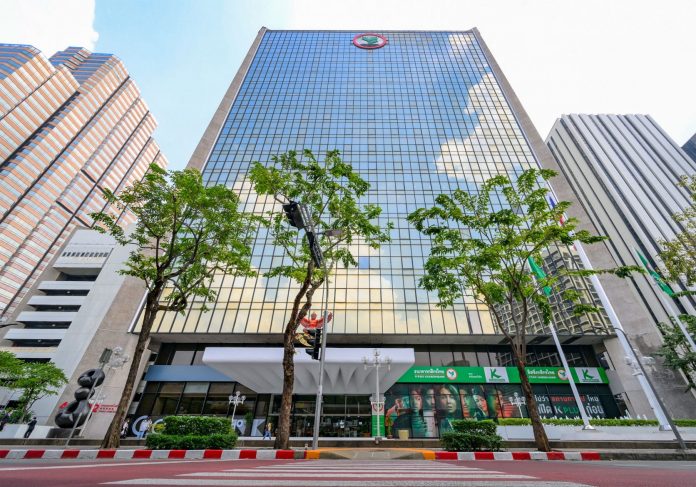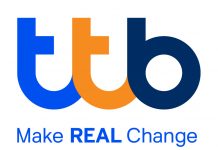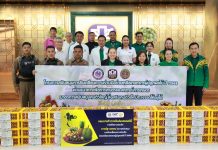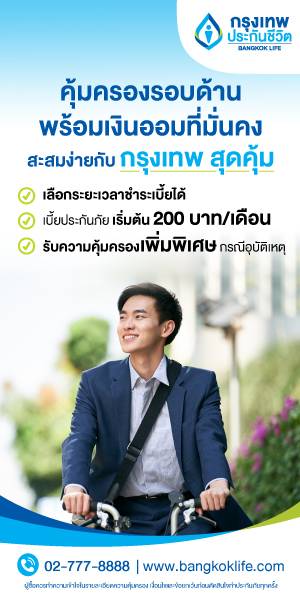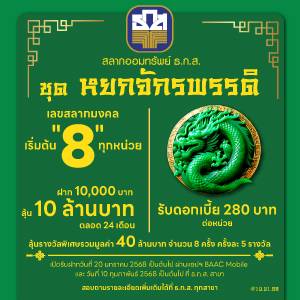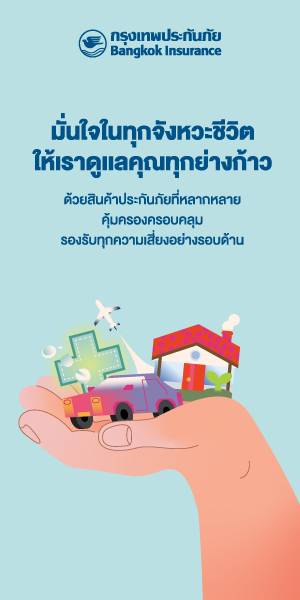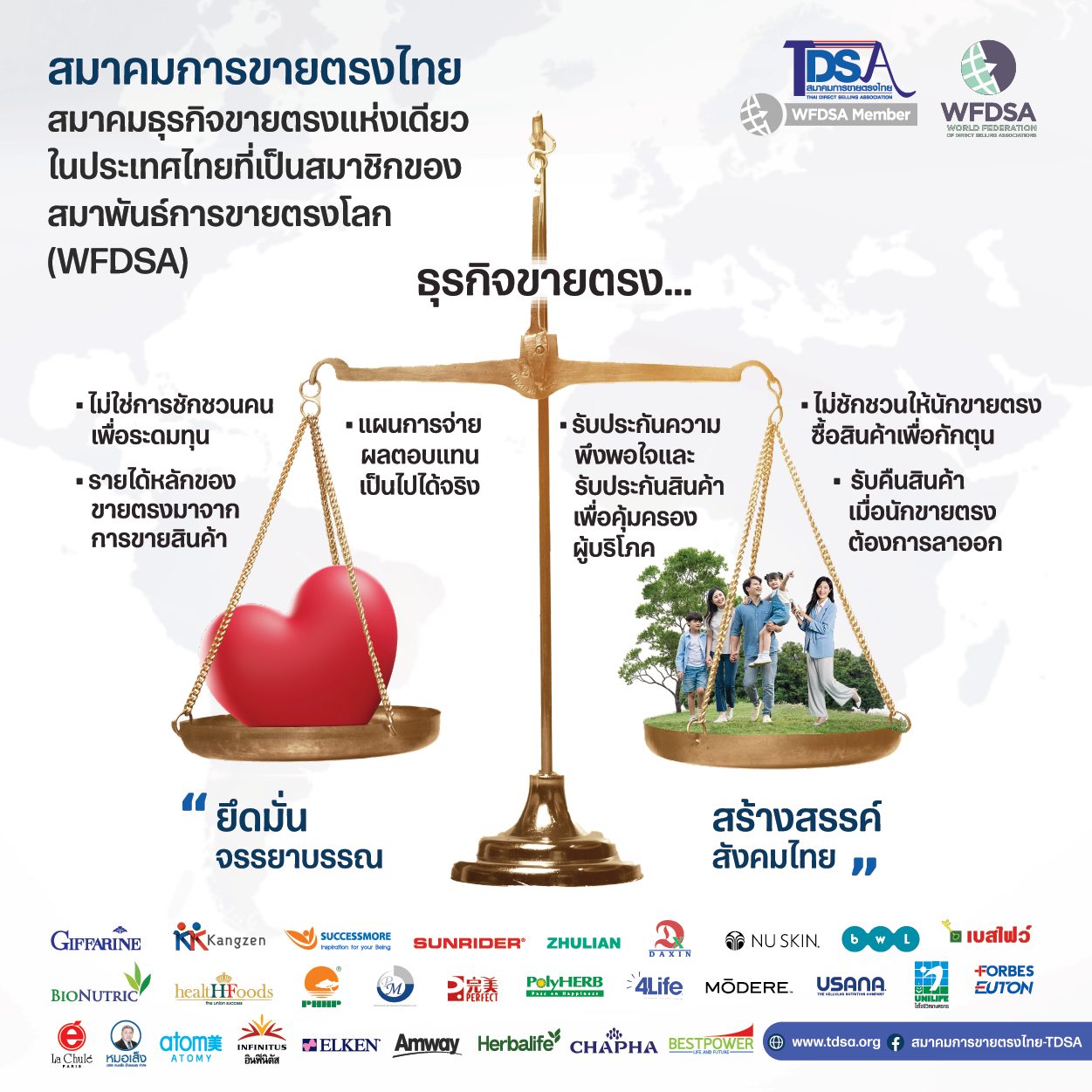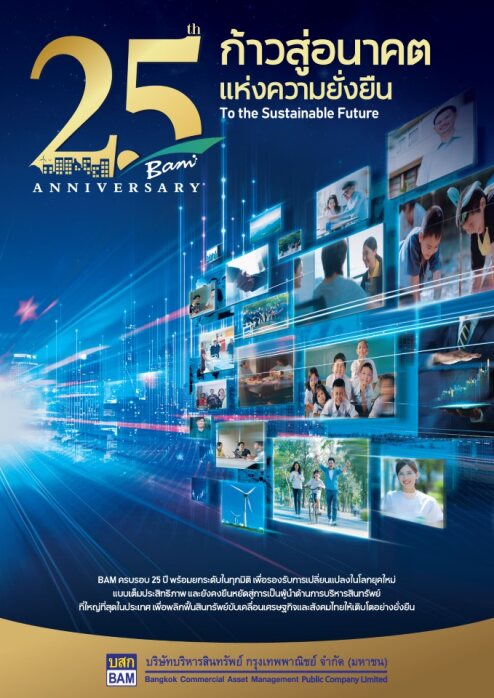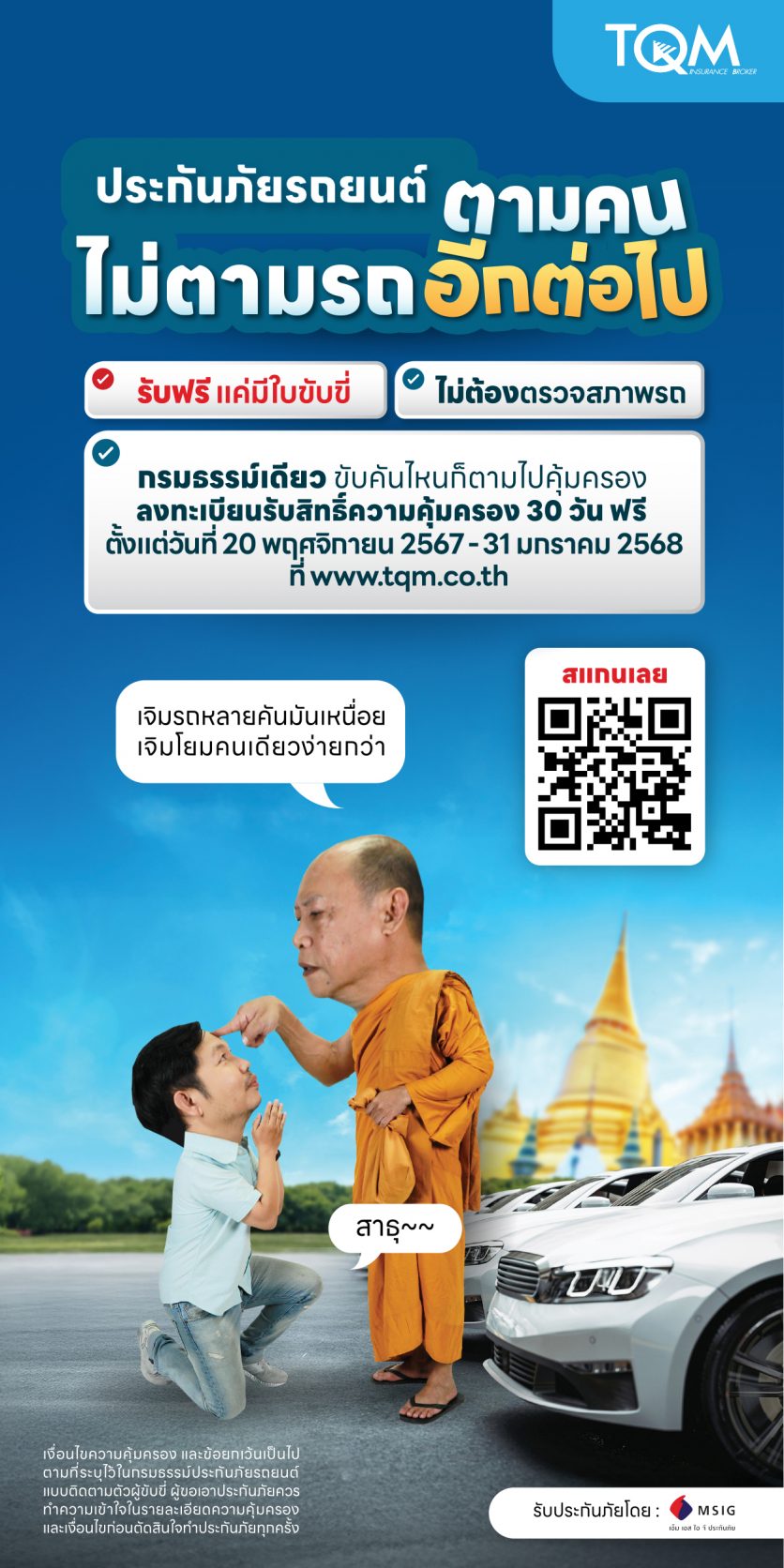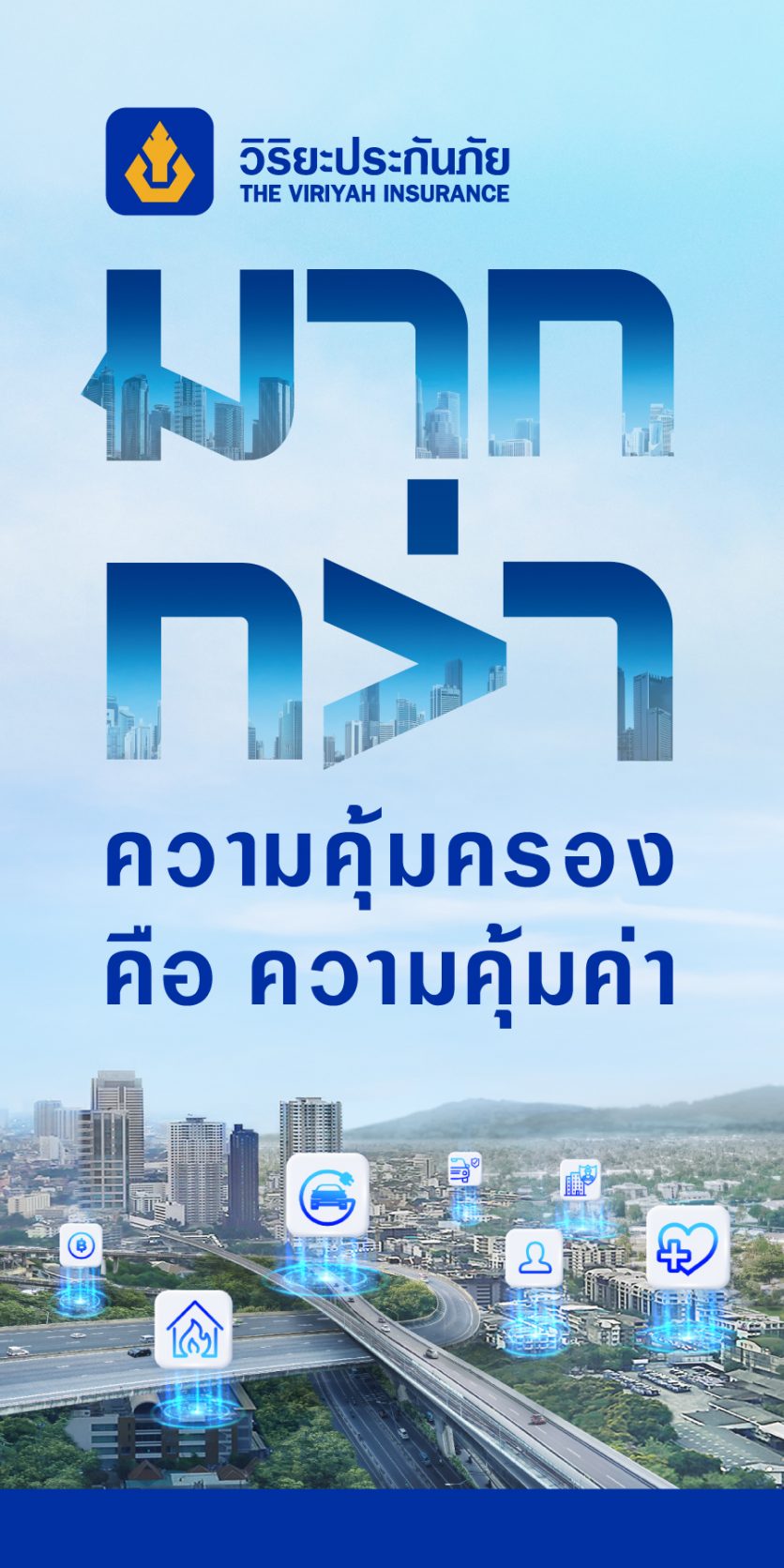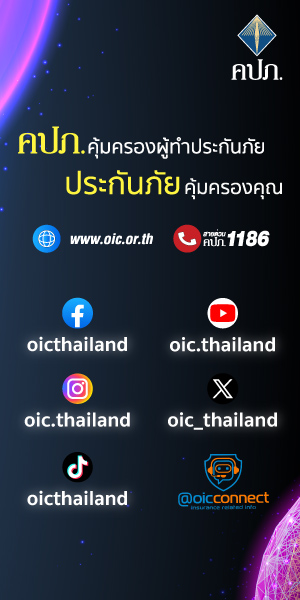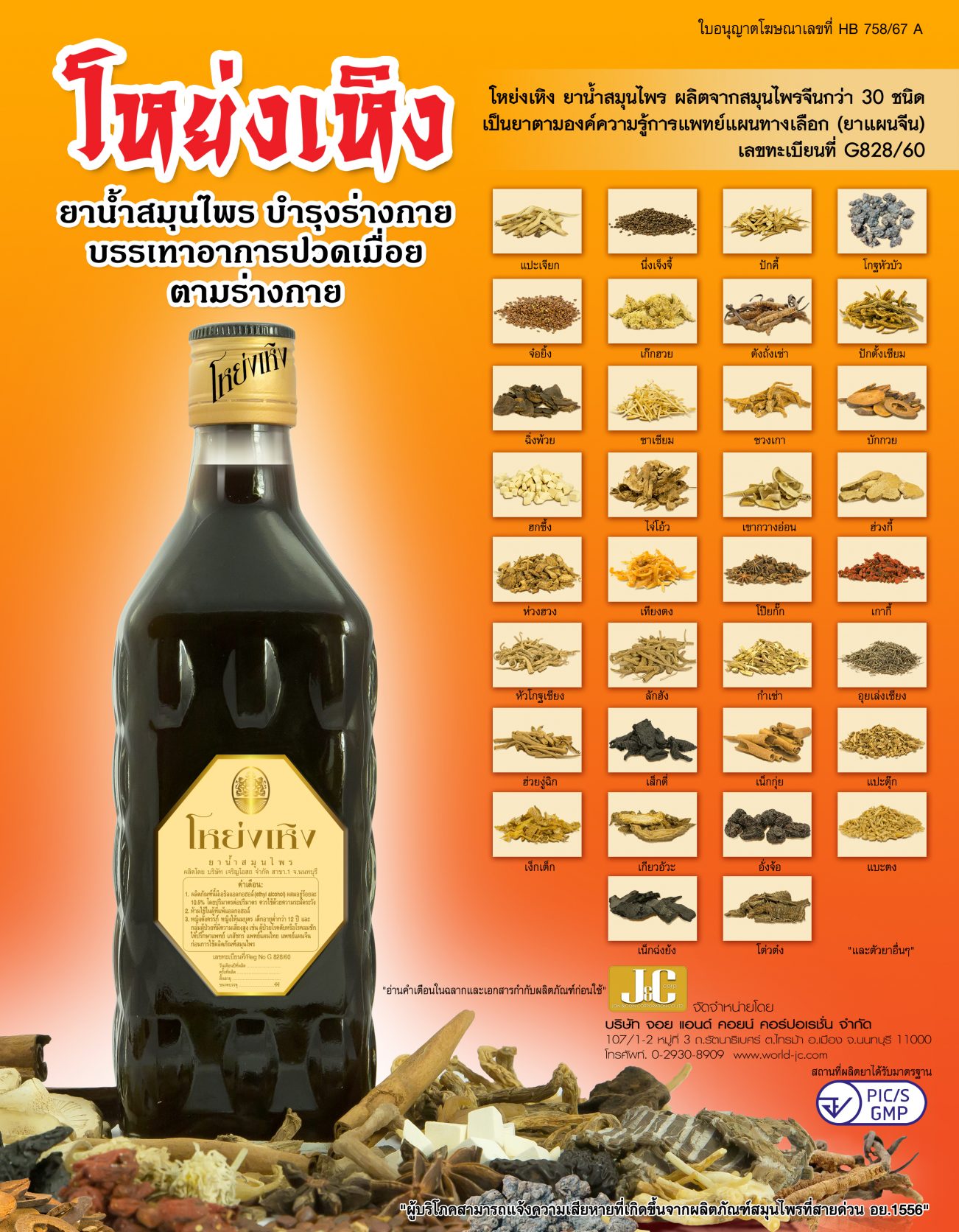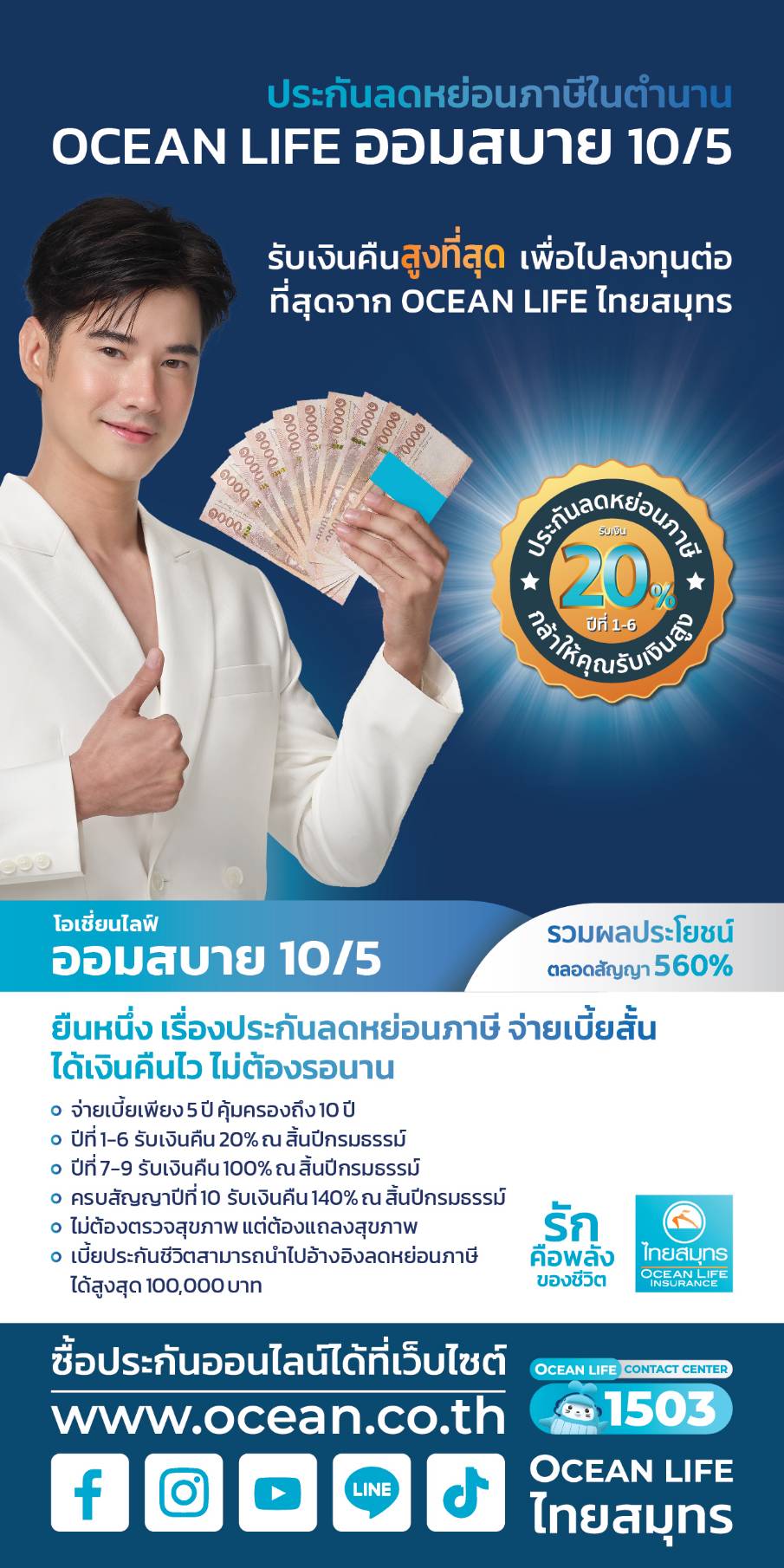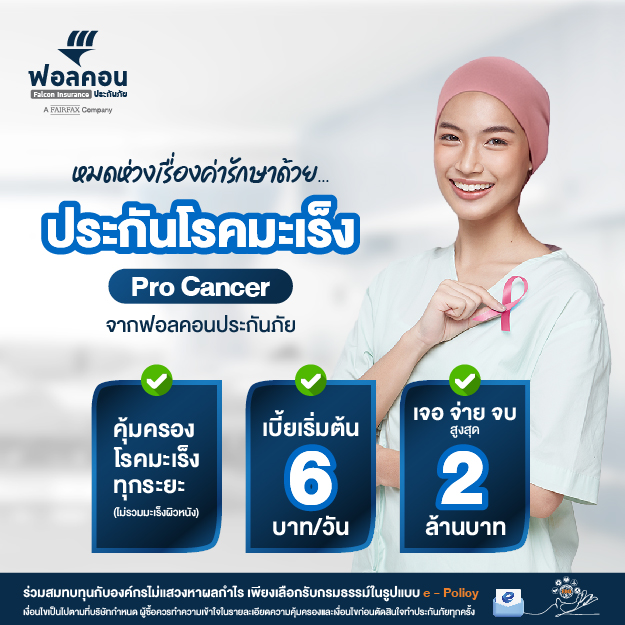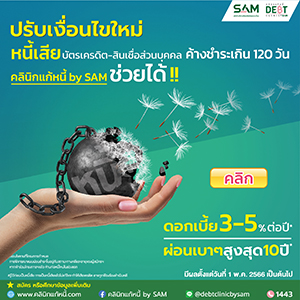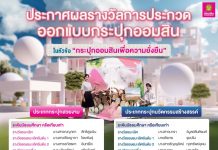กสิกรไทยยังคงดำเนินยุทธศาสตร์บนหลักการธนาคารแห่งความยั่งยืน ต่อยอดยุทธศาสตร์เพื่อการเติบโตทางธุรกิจและตอบโจทย์ลูกค้า ผ่านการพัฒนาบริการบนดิจิทัล การยกระดับการปล่อยสินเชื่อ การขยายการให้บริการลงทุนและประกัน และการขยายตลาดใน AEC+3 ควบคู่กับการเพิ่มประสบการณ์ที่ดีให้กับลูกค้าผ่านทุกช่องทาง และการยกระดับความสามารถในการแข่งขันในระยะยาวอย่างต่อเนื่อง เพื่อรักษาความมั่นคงในฐานะสถาบันการเงินชั้นนำ สามารถรับมือกับความผันผวนของภาวะเศรษฐกิจที่อาจจะเกิดขึ้นได้อย่างทันท่วงที ตลอดจนนำพาสังคมและเศรษฐกิจไทยเติบโตอย่างยั่งยืน โดยตั้งเป้าหมายทางการเงินปี 2566 สินเชื่อโต 5-7% และควบคุมคุณภาพสินทรัพย์ให้ NPL Ratio อยู่ต่ำกว่า 3.25% อีกทั้งยังคงดำเนินการเชิงรุกในการดูแล และให้ความช่วยเหลืออย่างต่อเนื่องแก่ลูกค้า

นางสาวขัตติยา อินทรวิชัย ประธานเจ้าหน้าที่บริหาร ธนาคารกสิกรไทย เปิดเผยว่า เศรษฐกิจไทยในปี 2566 มีแนวโน้มฟื้นตัวได้ดีกว่าปี 2565 โดยคาดว่าจะเติบโตที่ 3.7% ด้วยแรงส่งจากภาคการท่องเที่ยวเป็นสำคัญ โดยเฉพาะเมื่อจีนมีนโยบายเปิดประเทศ อย่างไรก็ตาม ตัวเลขนักท่องเที่ยวคาดว่าจะกลับสู่ระดับก่อนโควิด-19 ในปี 2567 อีกทั้งความเสี่ยงจากการชะลอตัวของภาคการส่งออกที่อาจได้รับผลกระทบจากการเข้าสู่ภาวะถดถอยในเศรษฐกิจแกนหลักของโลก ส่งผลให้เศรษฐกิจไทยจะยังคงเติบโตเป็น K Shape เห็นภาพการฟื้นตัวที่ไม่ทั่วถึงในแต่ละประเภทธุรกิจ ท่ามกลางการปรับเพิ่มของต้นทุนธุรกิจ อาทิ ค่าจ้างแรงงาน และอัตราดอกเบี้ยนโยบายที่อยู่ในขาขึ้น ตลอดจนหนี้ครัวเรือนที่ยังอยู่ในระดับสูง
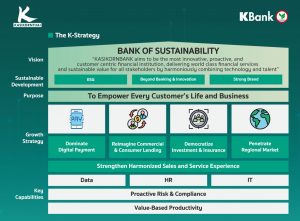
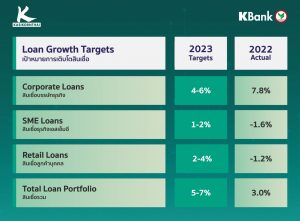
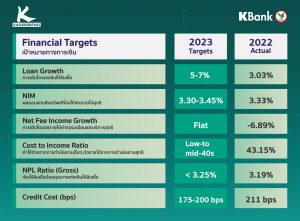 ธนาคารกสิกรไทยจึงได้ประกาศเป้าหมายทางการเงินปี 2566 ที่มีการเติบโตสอดคล้องกับสถานการณ์ทางเศรษฐกิจและหลักความระมัดระวังอย่างต่อเนื่อง ดังนี้
ธนาคารกสิกรไทยจึงได้ประกาศเป้าหมายทางการเงินปี 2566 ที่มีการเติบโตสอดคล้องกับสถานการณ์ทางเศรษฐกิจและหลักความระมัดระวังอย่างต่อเนื่อง ดังนี้
• การเติบโตของเงินให้สินเชื่อ (Loan Growth) ที่ 5-7% จากการขยายตัวของสินเชื่อตามกลยุทธ์ในการดำเนินธุรกิจในภูมิภาค AEC+3 โดยเฉพาะจีน เวียดนาม และอินโดนีเซีย อันเป็นการแสวงหาและกระจายแหล่งรายได้ใหม่ รวมถึงการเติบโตสินเชื่อธุรกิจบรรษัท อีกทั้ง ธนาคารยังคงนำข้อมูลมาใช้วิเคราะห์ในการปล่อยสินเชื่อ (Data Analytics) อย่างต่อเนื่อง โดยมุ่งเน้นการสร้างรายได้บนความเสี่ยงที่คุ้มค่า วิเคราะห์เพื่อหาลูกค้าที่มีความสนใจและมีความสามารถในการจ่ายคืน คัดกรองและดูแลคุณภาพของสินเชื่ออย่างใกล้ชิด ตั้งเป้าสินเชื่อบรรษัทธุรกิจเติบโต 4-6% สินเชื่อธุรกิจเอสเอ็มอีเติบโต 1-2% และสินเชื่อลูกค้าบุคคลเติบโต 2-4%
• ผลตอบแทนสินทรัพย์ที่ก่อให้เกิดรายได้สุทธิ (Net Interest Margin:NIM) ที่ 3.30-3.45% สอดคล้องกับทิศทางอัตราดอกเบี้ย และการเติบโตสินเชื่อของธนาคาร รวมถึงการบริหารจัดการต้นทุนดอกเบี้ยในระดับที่ดี
• รายได้ค่าธรรมเนียมและบริการสุทธิ (Net Fee Income Growth) ทรงตัว จากพฤติกรรมผู้บริโภคที่เปลี่ยนไปส่งผลต่อรายได้ค่าธรรมเนียมรับจากการทำธุรกรรม ในขณะที่ธนาคารจะขยายผลิตภัณฑ์และบริการที่เกี่ยวกับ Wealth Management เพื่อช่วยบริหารความมั่งคั่งให้ลูกค้า รวมถึงการขยายตัวของผลิตภัณฑ์ที่เกี่ยวข้องกับธุรกิจการท่องเที่ยว
• ค่าใช้จ่ายจากการดำเนินงานอื่น ๆ ต่อรายได้จากการดำเนินงานสุทธิ (Cost to Income Ratio) คาดว่าจะอยู่ในระดับ Low to Mid-40s จากรายได้ที่เติบโตสอดคล้องกับการทยอยฟื้นตัวของเศรษฐกิจ ในขณะที่ธนาคารยังคงให้ความสำคัญกับการจัดการต้นทุนและการเพิ่มประสิทธิภาพ (Productivity) อย่างต่อเนื่อง
• เงินให้สินเชื่อด้อยคุณภาพต่อเงินให้สินเชื่อ (NPL Ratio (Gross) ที่ต่ำกว่า 3.25% โดยการเติบโตของเศรษฐกิจไทยที่ยังคงเป็น K Shape มีการฟื้นตัวที่ไม่ทั่วถึงในแต่ละประเภทธุรกิจยังคงส่งผลกระทบต่อคุณภาพเงินให้สินเชื่อ ซึ่งธนาคารจะยังคงบริหารจัดการคุณภาพสินทรัพย์ในเชิงรุกอย่างต่อเนื่อง
• Credit Cost คาดว่าจะอยู่ในช่วง 175-200 bps ทยอยลดลงจากระดับสูงสุดในปีก่อน โดยธนาคารยังคงใช้หลักความระมัดระวังและนโยบายทางการเงินที่รอบคอบในการพิจารณาสำรองผลขาดทุนด้านเครดิตที่คาดว่าจะเกิดขึ้น
นางสาวขัตติยากล่าวเพิ่มเติมว่า สำหรับแผนยุทธศาสตร์การดำเนินธุรกิจ นั้น ธนาคารกสิกรไทยยังคงขับเคลื่อนธุรกิจด้วยหลักการเป็นธนาคารแห่งความยั่งยืน (Bank of Sustainability) ภายใต้การกำกับดูแลกิจการที่ดี การบริหารความเสี่ยงและการบริหารจัดการต้นทุนที่เหมาะสม โดยมีจุดมุ่งหมายเพื่อเพิ่มอำนาจให้ทุกชีวิตและธุรกิจของลูกค้า (To Empower Every Customer’s Life & Business) ด้วยยุทธศาสตร์ในการดำเนินธุรกิจ ดังนี้
1. ก้าวสู่การเป็นธนาคารแห่งความยั่งยืน (Sustainable Development) ด้วยหลักการ ESG ที่ครอบคลุมทั้งด้านสิ่งแวดล้อม สังคม และธรรมาภิบาล ความสามารถในการแข่งขันในโลกธุรกิจที่มีนวัตกรรม รวมถึงความสามารถในการทำธุรกิจที่ต่อยอดจากธุรกิจธนาคารแบบเดิม (Beyond Banking & Innovation) ท่ามกลางเทคโนโลยี พฤติกรรมผู้บริโภค และสภาพแวดล้อมอื่นๆ ที่เปลี่ยนแปลงอย่างรวดเร็ว รวมทั้งการสร้างแบรนด์ที่แข็งแกร่ง (Strong Brand) ภายใต้แบรนด์หนึ่งเดียว ในชื่อธนาคารกสิกรไทย (KASIKORNBANK)
2. ต่อยอดยุทธศาสตร์เพื่อการเติบโตทางธุรกิจและตอบโจทย์ลูกค้า (Growth Strategy) ด้วยการเป็นผู้นำในการให้บริการชำระเงินทางดิจิทัล (Dominate Digital Payment) การยกระดับการปล่อยสินเชื่อทั้งด้านธุรกิจและบุคคล (Reimagine Commercial & Consumer Lending) การขยายการให้บริการลงทุนและประกันไปยังกลุ่มลูกค้ารายย่อยและกลุ่มลูกค้าที่ยังเข้าไม่ถึงการลงทุนและประกัน (Democratize Investment & Insurance) การเจาะตลาดและขยายการเติบโตทางธุรกิจในภูมิภาค AEC+3 (Penetrate Regional Market) และการยกระดับประสบการณ์บริการและการขายแก่ลูกค้า (Strengthen Harmonized Sales and Service Experience) ผ่านการประสานการให้บริการอย่างไร้รอยต่อระหว่างช่องทางต่างๆ ของธนาคาร โดยมี K PLUS เป็นช่องทางหลักในการเชื่อมโยงทุกช่องทางเข้าด้วยกัน อีกทั้งปรับปรุงโครงสร้างพื้นฐานเพื่อเพิ่มประสบการณ์ที่ดีให้กับลูกค้าผ่านทุกช่องทาง
3. เพิ่มประสิทธิภาพในการทำงานแบบ End-to-End โดยยกระดับความสามารถในการแข่งขันในระยะยาวอย่างต่อเนื่อง เพื่อส่งมอบบริการแก่ลูกค้า ผ่านความสามารถหลัก (Key Capabilities) ใน 5 ด้าน ได้แก่ 1. การพัฒนาความสามารถในการวิเคราะห์และการใช้ข้อมูล เพื่อเพิ่มโอกาสทางธุรกิจและประสิทธิภาพการดำเนินงาน (Data) 2. การเป็นที่ทำงานที่ดีที่สุดสำหรับการเรียนรู้และการเป็นผู้นำ (HR) 3. การใช้เทคโนโลยีที่ทันสมัย เพื่อให้ธนาคารเป็นผู้ให้บริการทางการเงินชั้นนำในระดับภูมิภาค (IT) 4. การระบุความเสี่ยงด้านต่าง ๆ ที่อาจเกิดขึ้นและกำหนดแนวทางการป้องกันในเชิงรุก (Proactive Risk & Compliance) และ 5. การเพิ่มประสิทธิภาพในการทำงาน โดยสร้างคุณค่าที่มากขึ้น (Value-Based Productivity)
ทั้งนี้ ในปี 2565 ที่ผ่านมา ธนาคารได้ดำเนินโครงการด้านยุทธศาสตร์ ด้วยโมเดลธุรกิจแบบใหม่ที่ตอบโจทย์ความต้องการของลูกค้าและบริบททางธุรกิจที่เปลี่ยนไป เช่น การผนึกเจเอ็มที ร่วมทุน 10,000 ล้านบาท จัดตั้งบริษัท บริหารสินทรัพย์ เจเค จำกัด (JK AMC) บริษัทร่วมทุนแห่งแรกในไทย ระหว่างธนาคารพาณิชย์และบริษัทบริหารสินทรัพย์ (AMC) เพื่อยกระดับการบริหารคุณภาพสินทรัพย์ การเปิดตัว “K PAY LATER” เป็นธนาคารแรก ส่งมอบสินเชื่อช่วยคนตัวเล็กไว้ใช้จ่ายในชีวิตประจำวัน รวมทั้งการขยายธุรกิจในภูมิภาค AEC+3 ด้วยการเพิ่มสัดส่วนการถือหุ้นรวมในธนาคารแมสเปี้ยน ประเทศอินโดนีเซีย เป็น 67.5% การเปิดสาขานครโฮจิมินห์ ประเทศเวียดนาม และการเปิดตัว K PLUS Vietnam ที่เป็นแกนหลักในการสร้าง Digital Lifestyle Ecosystem ให้แก่ลูกค้าบุคคลในประเทศเวียดนาม เป็นต้น และในปี 2566 นี้ ธนาคารจะเดินหน้าโครงการเชิงยุทธศาสตร์อย่างต่อเนื่อง เพื่อส่งมอบบริการที่ตอบโจทย์การใช้ชีวิตและธุรกิจของลูกค้าในบริบทที่เปลี่ยนแปลงอย่างรวดเร็ว
นางสาวขัตติยากล่าวตอนท้ายว่า นอกเหนือจากสร้างการเติบโตทางธุรกิจแล้ว ภารกิจสำคัญของธนาคาร คือ การขับเคลื่อนสังคมและเศรษฐกิจของประเทศให้เดินหน้าต่อไปอย่างยั่งยืน โดยธนาคารยังคงมุ่งเน้นการใช้เทคโนโลยี นวัตกรรมรูปแบบใหม่ และการผนึกกำลังกับพันธมิตรทางธุรกิจทั้งในและต่างประเทศ เพื่อช่วยเหลือลูกค้าในการดำเนินชีวิตและธุรกิจ ผ่านการนำเสนอผลิตภัณฑ์และบริการที่เหมาะสมกับลูกค้า ปรับปรุงการให้บริการเพื่อยกระดับประสบการณ์ของลูกค้า และขยายโอกาสการเข้าถึงบริการทางการเงินในระบบธนาคารพาณิชย์ให้แก่ประชาชนในวงกว้าง ให้ได้รับการสนับสนุนเงินทุนและสภาพคล่อง ควบคู่กับการให้ข้อมูลและความรู้เพื่อให้ลูกค้าบุคคลและธุรกิจเติบโตอย่างเข้มแข็ง รวมทั้งธนาคารยังคงดำเนินการเชิงรุกในการดูแลและให้ความช่วยเหลืออย่างต่อเนื่องแก่ลูกค้าที่ได้รับผลกระทบจากภาวะเศรษฐกิจที่มีการฟื้นตัวไม่เท่ากัน ผ่านช่องทางต่าง ๆ ของธนาคาร อีกทั้ง ยังคงเดินหน้าเพื่อมุ่งสู่การเป็นผู้นำด้าน ESG ของกลุ่มธนาคารในเอเชียตะวันออกเฉียงใต้ และนำพาลูกค้าและธุรกิจไทยเดินหน้าสู่ระบบเศรษฐกิจที่เติบโตอย่างยั่งยืนไปด้วยกัน
Guided by the principles of a Bank of Sustainability, KBank unveils its strategic directions which focus on business growth, customer responsiveness and enhancement of end-to-end work efficiency; it also aims for loan growth of 5-7 percent in 2023 amid a “K-shaped” economic recovery
KASIKORNBANK (KBank) has established its business directions in accordance with the principles of a Bank of Sustainability. To advance its K Strategy, the Bank prioritizes business growth and customer responsiveness: dominate digital payment, reimagine commercial and consumer lending, democratize investment and insurance, and penetrate regional market in the AEC+3 region. In parallel, it focuses on enhancing the customer experience across all channels while also upgrading its long-term competitiveness. All of these endeavors are undertaken in order to secure the Bank’s status as a leading financial institution, to prepare for potential economic volatility, and to drive the Thai society and economy towards sustainable growth. For its financial targets in 2023, KBank aims for loan growth of 5-7 percent and control asset quality with NPL ratio targeted less than 3.25 percent. In addition, KBank still proactively embarked in take care of and continuously provide assistance to customers.
Ms. Kattiya Indaravijaya, KBank Chief Executive Officer, stated that the Thai economic recovery in 2023 has thus far gained traction compared to 2022. Thai GDP is expected to grow 3.7 percent, driven mainly by tourism given China’s reopening policy. However, tourist arrivals are unlikely to return to pre-COVID-19 level until 2024, while risk lingers from slowing exports as advanced economies are lapsing into a recession. The Thai economy will therefore see an uneven or “K-shaped” recovery as improvement will vary across different businesses amid persistently high operating costs as evidenced by rising wage and interest rate trends as well as high household debt.
KBank has announced its financial targets for 2023 with growth in line with the prevailing economic conditions and its prudent business operations. In detail:
• Loan growth of 5-7% will be mainly from regional expansion strategy to seek new source of revenue and be more diversified, along with growing corporate lending. The Bank will continue to focus on quality using effective data analytics capability, analyzing to find customers who are interested in loans and have ability to pay, and screen and closely monitor credit quality. The Bank targets to grow corporate loans by 4-6%, SME loans by 1-2%, and retail loans by 2-4%.
• Net Interest Margin (NIM) will be at 3.30-3.45%, in line with interest rate trend and loan growth, along with good funding cost management.
• Net fee income growth will remain flat due to changes in consumer behavior that will affect conventional transaction fees. Wealth management business, and products related to tourism business will expand.
• Cost to income ratio is expected to stand at low- to mid-40s level as income growth in line with the gradual economic recovery, while the Bank continues to focus on cost management and productivity improvement.
• NPL ratio (Gross) less than 3.25 percent as Thai economic growth will be in K Shape. Uneven economic recovery continues to impact credit quality. The Bank will continue to proactively manage asset quality.
• Credit Cost is expected to be in the range of 175-200 bps, gradually decreased from the peak level in the previous year. The Bank continues on prudent financial policy when considering expected credit losses.
Ms. Kattiya said, “For business strategies, KBank will continue to advance its business through the principles of a Bank of Sustainability under good corporate governance, appropriate risk and cost management, with the aim of empowering every customer’s life and business.” The Bank’s business strategies are as follows:
1. Sustainable Development: KBank has operated business in accordance with ESG principles across all three dimensions – environmental, social and governance (ESG). We prioritize the development of competitive capabilities in a technology-driven business world that goes beyond banking and innovation, amid the ever-evolving technology, consumer behavior and environment. Our focus is also on creating a strong brand under the single brand of KASIKORNBANK.
2. Growth Strategy: To advance K-Strategy for business growth and customer responsiveness. Our growth strategies include dominating digital payment, reimagining commercial and consumer lending, democratizing investment and insurance, and penetrating regional markets in the AEC+3 region. We also focus on strengthening harmonized sales and service experience, seamlessly integrating all service channels of KBank through K PLUS – our key service channel. Along with this, KBank will enhance basic infrastructure to offer an excellent customer experience across all service channels.
3. Key Capabilities: End-to-end work efficiency enhancement. We prioritize upgrades of our long-term competitiveness through five key capabilities, namely, 1) Data: Development of data analytics capability to enhance business opportunities and operational efficiency; 2) Human Resources: Being the Best Place to Work, Learn and Lead; 3) Information Technology: Adopting modern, world-class technology to make KBank the top regional financial service provider; 4) Proactive Risk & Compliance: Proactively identifying potential risks and establishing loss prevention and detection; and 5) Value-Based Productivity: Enhancement of work efficiency through creation of value proposition.
In 2022, KBank established strategic directions under a novel business model in order to enhance customer responsiveness in answer to the changing business contexts. Notable efforts include its joint investment with JMT Network Services PCL (JMT) in setting up JK Asset Management Company (JK AMC) – Thailand’s first joint venture co-owned by a commercial bank and an AMC in order to improve asset quality management. KBank also introduced “K PAY LATER” – a loan designed specifically for small-pocket customers’ daily spending – the first of its kind in Thailand. In order to expand its reach to other countries within AEC+3, the Bank increased its shareholding in PT Bank Maspion Indonesia Tbk to 67.5 percent and opened the Ho Chi Minh City Branch in Vietnam, while also launching K PLUS Vietnam so as to create a Digital Lifestyle Ecosystem for retail customers in this market. In 2023, the Bank will continue to implement its strategic projects with the aim of empowering every customer’s life and business in the rapidly changing world.
Ms. Kattiya noted in closing, “In addition to business growth, KBank’s mission is to drive society and the Thai economy forward in a sustainable manner. The Bank continues to focus on adoption of technology, innovations, and synergies with business partners both at home and abroad, to empower every customer’s life and business. To this end, our efforts are focused on offering suitable products and services to customers; improving services for an enhanced customer experience; and promoting financial inclusion in the commercial banking system for the general public through funding sources and liquidity enhancement, along with provision of financial literacy to retail and business customers in support of their vigorous growth. In addition, we continue to adopt a proactive approach in assisting our customers affected by the uneven economic recovery through the Bank’s various channels. We also embrace ESG aspirations with the aim of becoming the ESG leader among banks in Southeast Asia, leading Thai customers and businesses to move towards a sustainable economy together.
********************



